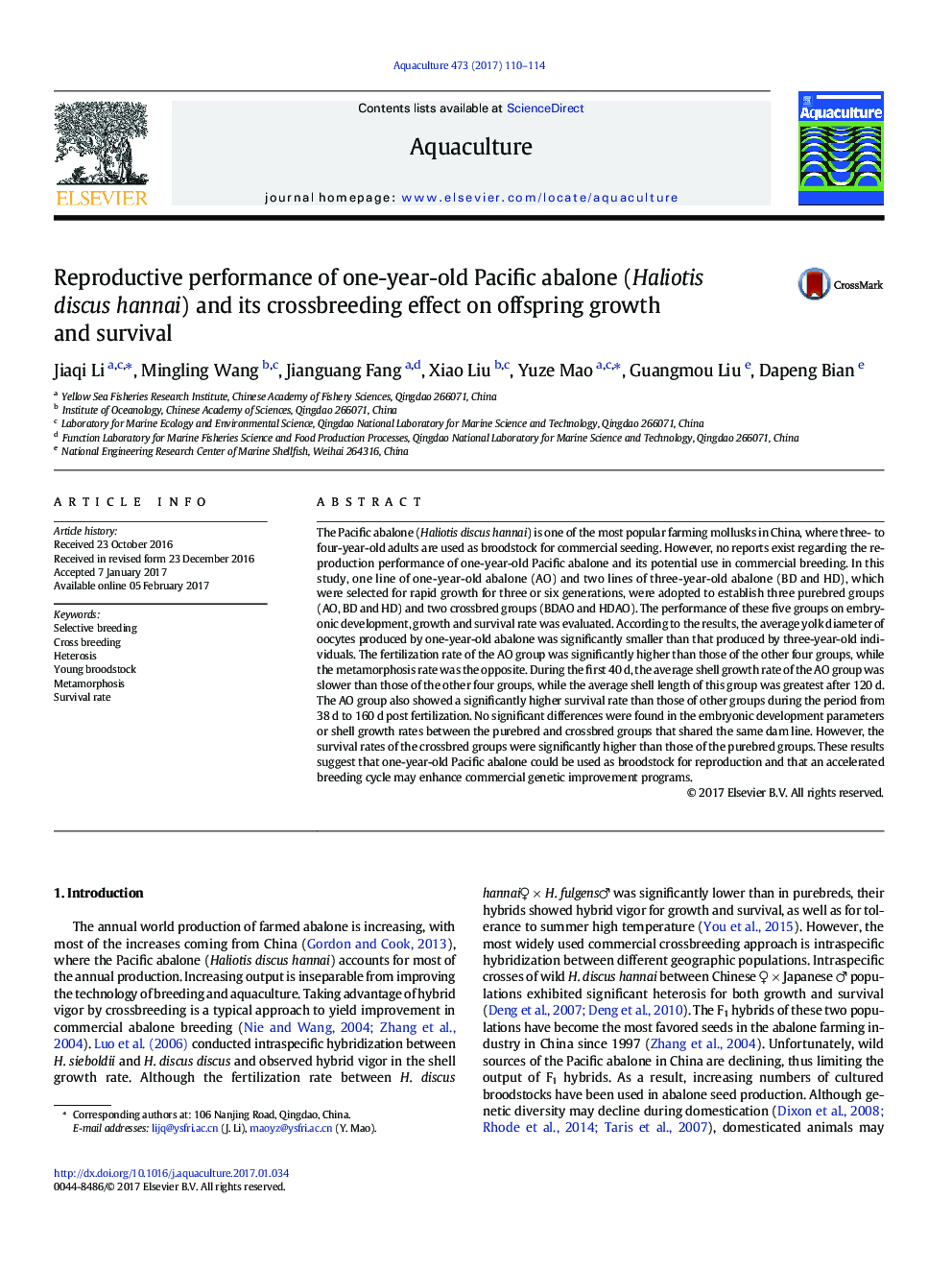| Article ID | Journal | Published Year | Pages | File Type |
|---|---|---|---|---|
| 5539036 | Aquaculture | 2017 | 5 Pages |
Abstract
The Pacific abalone (Haliotis discus hannai) is one of the most popular farming mollusks in China, where three- to four-year-old adults are used as broodstock for commercial seeding. However, no reports exist regarding the reproduction performance of one-year-old Pacific abalone and its potential use in commercial breeding. In this study, one line of one-year-old abalone (AO) and two lines of three-year-old abalone (BD and HD), which were selected for rapid growth for three or six generations, were adopted to establish three purebred groups (AO, BD and HD) and two crossbred groups (BDAO and HDAO). The performance of these five groups on embryonic development, growth and survival rate was evaluated. According to the results, the average yolk diameter of oocytes produced by one-year-old abalone was significantly smaller than that produced by three-year-old individuals. The fertilization rate of the AO group was significantly higher than those of the other four groups, while the metamorphosis rate was the opposite. During the first 40Â d, the average shell growth rate of the AO group was slower than those of the other four groups, while the average shell length of this group was greatest after 120Â d. The AO group also showed a significantly higher survival rate than those of other groups during the period from 38Â d to 160Â d post fertilization. No significant differences were found in the embryonic development parameters or shell growth rates between the purebred and crossbred groups that shared the same dam line. However, the survival rates of the crossbred groups were significantly higher than those of the purebred groups. These results suggest that one-year-old Pacific abalone could be used as broodstock for reproduction and that an accelerated breeding cycle may enhance commercial genetic improvement programs.
Related Topics
Life Sciences
Agricultural and Biological Sciences
Aquatic Science
Authors
Jiaqi Li, Mingling Wang, Jianguang Fang, Xiao Liu, Yuze Mao, Guangmou Liu, Dapeng Bian,
